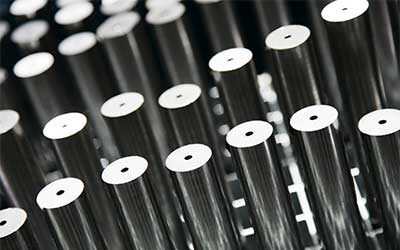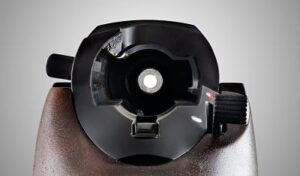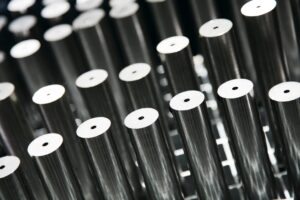Let’s Do the Twist

Let’s Do the Twist
This blog is the fifthin a series of firearm terminology we often hear in the hunting and shooting industry. I’ll go over some of these terminologies listed below for each blog segment in this series for the next few months.
- Free Floating Barrel
- Muzzle Brake, Flash Suppressor
- Fluting
- Bedding
- Rifling
- Bore-Sight
- Suppressors, Moderators, Silencers, Can
Keep in mind there are so many other terms and acronym related to this industry that isn’t on here. I will highlight the most common words and discuss a few on each topic to explain what those words are and its meaning within the limits of a blog without turning it into a book.
What is Rifling?
Rifling consists of grooves cut or formed in a spiral nature, lengthwise down the center of the barrel. Rifling is formed in the barrels of firearms to impart a spin on the bullets for increased range and accuracy.

Rifling inside the barrel of a B-14 Timber seen from the rear action chamber.
Twist-Rate Factor
The speed of rotation caused by rifling is determined by the rifling’s pitch or twist rate inside the barrel. As longer bullets became more popular in modern centerfire rifles, rifling with even steeper pitches was required. Some of the extremely long bullets available today require 1:7, 1:8 twist. The 1:9 twist was considered fast in its days, but such fast twist is not new. The barrels of older military rifles especially 6.5 diameters have already been using faster twist rate to help stabilize longer bullets.
Now a 1:9 twist rate doesn’t sound like a fast twist in our current modern situation with the advancement in firearm and precision barrel making technology, but an old military rifle with 1:9 twist accurately hitting targets with open sight out to 200 or 300 yards back then were considered very accurate.
What Does a Rifling Do?
The short answer is that the rifling imparts a control spin to the bullet along the axis length of the barrel. The rotational spin provides greater stability to the bullet by increasing its aerodynamic stability in flight, which enhances both the range and accuracy of the firearm.
Accuracy Issues
One of the most common issues or problems that I have seen or heard of when it comes to accuracy issues is that shooters, especially new shooters do not fully understand the match make-up of a bullet’s weight to the twist rate on their rifles. Don’t get me wrong, there have been other issues as well that affects accuracy, whether it was an overlook flaw or damages during the building process, such flaws are miniscule compared to new shooters not fully understanding the twist to proper bullet selections for their rifles. Keep that in mind if you are shooting unlabeled box ammo or mixed batch of ammo.

When it comes to accuracy, the first step is having quality raw material.
Conclusion and Question
Match-winning accuracy comes from using the best steels available along with the highest level of precision in forming the rifling as precise as possible. No two barrels built with the same rifling process will guarantee it will perform in the same manner repeatedly. Every barrel will have its own characteristic performance on how it will perform down range. Shooting the proper bullet to the twist rate on your rifle is a step forward in understanding your rifle’s potential. Shoot safe and straight!
About the Author
Al Louangketh is the Bergara Rifles International Pro Team manager and Senior Editor for the Bergara Rifles International blog. He holds a PhD in Wildlife Science and is a retired U.S Army Veteran living in Germany.
Feel free to contact him if you have any questions regarding this blog or any topics of interest related to the hunting and shooting industry.
